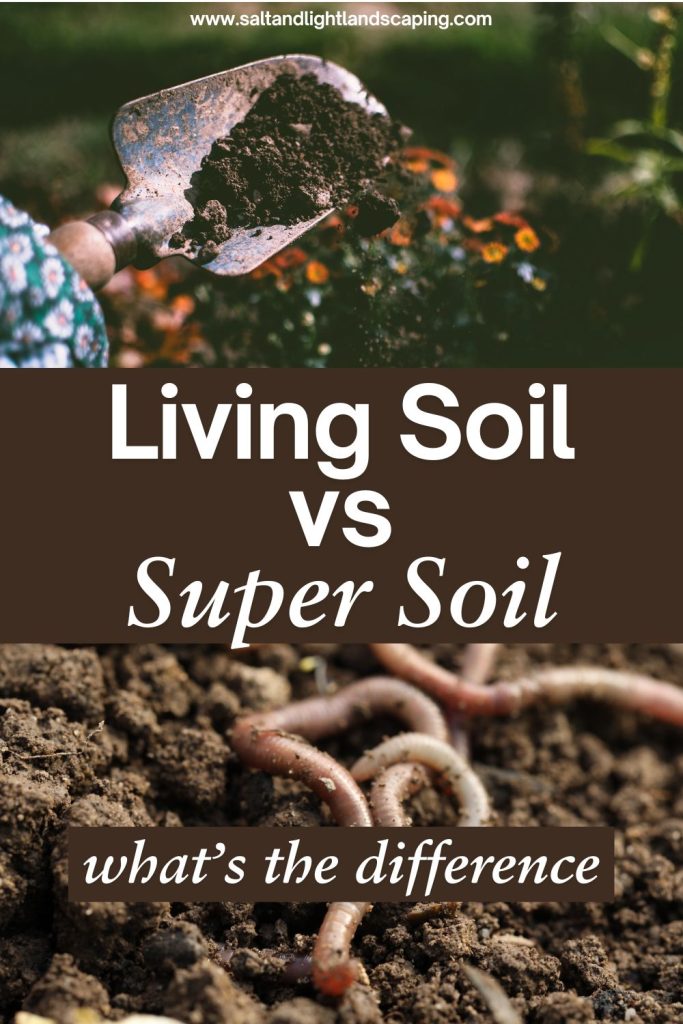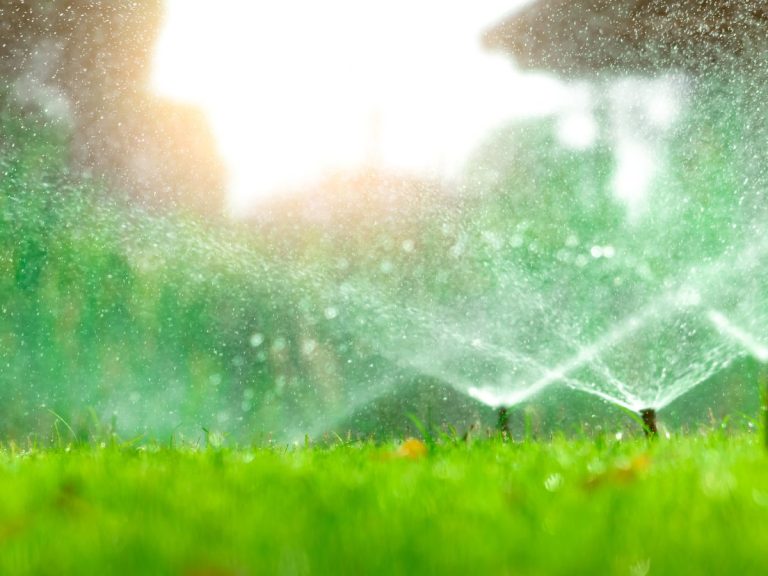Super Soil vs Living Soil? A Simple Guide for Gardeners
If you’ve been trying to grow healthier plants—whether it’s in your garden, greenhouse, or a few pots on your porch—you’ve probably come across the terms super soil and living soil. They both sound like magical dirt that will make your plants thrive… but super soil vs living soil….what’s the difference? And which one should you use?
In this post, We will breaki it all down in simple terms. We’ll talk about what super soil and living soil actually are, how they work, and which one might be best for your growing goals.
Whether you’re a beginner or just want to learn more about natural ways to boost plant health, this guide will help you feel more confident about your soil choices!

As Amazon Associates we earn from qualifying purchases. This post contains affiliate links which means we make a small commission at no extra cost to you. See our full disclosure policy.
What Is Super Soil?
Super soil is a nutrient-packed, pre-fertilized organic growing medium. Think of it as a complete meal for your plants—all mixed in and ready to go. You don’t need to add much (or anything!) during the full growth cycle, which makes it super beginner-friendly and low-maintenance.
This super soil mix usually includes organic ingredients like compost, worm castings, blood meal, bone meal, feather meal, soft rock phosphate, rock dust, and dolomite lime. Everything gets mixed with a base soil like peat moss, coco coir, or fox farm, and is left to “cook” for a few weeks to release nutrients and activate the beneficial microorganisms.
Some super soil products, like Nature’s Living Soil concentrates or monster gardens blends, even come partially pre-mixed for you—great for young plants or gardeners short on time.
Super Soil Benefits
- Ready-to-Use Nutrition: Super soil is already loaded with organic nutrients, so there’s no need for synthetic fertilizers or daily feeding. Just water and go.
- Slow-Release Power: Because of its rich organic amendments, your plants get nutrients steadily, helping to avoid nutrient burn and giving great results from seed to harvest time.
- Perfect for Gallon Containers & Smart Pots: Many growers use 5-gallon containers or smart pots filled with super soil to reduce transplant shock and promote a healthy roots system.
- Low-Maintenance Feeding: This type of soil cuts out the guesswork. No need for tablespoons of concentrate or oz cup measurements of liquid feed—just top dress with a thin layer of nature like compost when needed.
- Works Well with Companion Planting: Pairing your plants or veggies with herbs or flowers can boost soil life and reduce pests—no chemicals needed.

Common Myths About Super Soil
🪴 Myth: Super soil guarantees the best yields.
Truth: It sets the stage, but things like plant roots, environment, and your care matter too.
🪴 Myth: You can reuse it forever.
Truth: After a few grows, nutrients run low. You’ll need to rejuvenate with top dressing, compost tea, or new organic amendments.
🪴 Myth: It’s only for pros.
Truth: Super soil actually makes things easier for beginners because it simplifies feeding. Even if you make your own soil, it’s an excellent way to support healthy plant growth.
Growth Tips for Super Soil
- Pre-moisten before planting to wake up microbes.
- Use a gallon of water to soak lightly, not soak the bottom of the container.
- Add earthworm castings or humic acid if plants need a boost.
- Improve drainage with coco coir if your own potting soil feels heavy.
- Stick to organic materials to keep the beneficial bacteria thriving.
What Is Living Soil?
Living soil is exactly what it sounds like—alive! It’s a balanced ecosystem full of beneficial microorganisms, fungi, and other critters that work together in a symbiotic relationship to feed your plants naturally. It’s like having your own little underground farm working full-time to keep your plants happy.

Living soil is what many organic farmers dream of—it supports long-term soil health and nutrient cycling.
Living Soil Benefits
- Loaded with Life: Full of beneficial bacteria, fungi, nematodes, and more. Each plays a unique role in making nutrients available and keeping pests in check.
- Slow, Steady Feeding: Nutrients are released over time by the microbes, so your plants grow at their natural pace.
- Improved Soil Structure: Organic matter like compost and mulch keeps the soil airy and moist, giving roots plenty of room to grow.
- Resists Pests Naturally: A strong soil community can protect your plants without the need for sprays or synthetic fertilizers.
- Great for Long Term Health: The more love you give it, the better it gets!
Common Myths About Living Soil
🌿 Myth: Living soil is just compost.
Truth: Compost is just one part. A true organic living soil is a full web of life, not just broken-down leaves.
🌿 Myth: It works instantly.
Truth: Living soil builds up over time. It’s a marathon, not a sprint.
🌿 Myth: Once it’s set up, you’re done.
Truth: You’ll still need to feed it organic matter regularly—like compost tea, mulch, or even top dressing with worm castings.
Best Practices for Living Soil
- Brew compost teas often to feed soil life.
- Use different organic ingredients like trace minerals or rock dust to keep your soil diverse.
- Keep the soil moist, but not soggy—a moist sponge is perfect.
- Use cover crops or rotate plants to support nutrient uptake and microbial diversity.
- Avoid digging too much—no-till is the only way to protect those fungal networks.
Super Soil vs Living Soil: What’s the Real Difference?
Here’s the major difference:
Super soil is more like a “pre-loaded” mix that’s ready to go right away.
Living soil is a living, breathing system that gets better with time.
| Feature | Super Soil | Living Soil |
|---|---|---|
| Nutrients | Pre-loaded with dry amendments | Built naturally through microbes |
| Prep Time | Needs a few weeks to “cook” | Develops slowly over time |
| Maintenance | Very low (great for beginners) | Needs regular feeding and attention |
| Soil Life | Some microbes | Full beneficial microorganisms |
| Best For | One-season grows | Long term gardening health |
Save it for Later: Super Soil vs Living Soil

Choosing the Right Soil for Your Garden
So, how do you actually decide between super soil and living soil? It really comes down to your gardening style, your goals, and how hands-on (or hands-off) you want to be. Both are amazing in their own way—and picking the right one can totally transform your gardening experience.
Super Soil vs Living Soil Things to Keep in Mind

🌱 Your Experience Level:
If you’re just getting started or want a more “set it and forget it” approach, super soil is your friend. It’s great for beginners or anyone who just wants to grow without too much fuss.
On the flip side, living soil is perfect for gardeners who love to nurture, tweak, and build something beautiful over time. It’s a long game—but totally worth it.
🌱 Time and Energy:
Super soil simplifies your routine—just water and watch things grow. Living soil takes more love: regular feeding with organic matter, compost tea, top dressing, and maybe even some dry amendments now and then.
🌱 What You’re Growing:
Fast growers or heavy feeders often do best with the rich nutrient levels of super soil. But if you’re growing herbs, veggies, or perennials where flavor and resilience matter more than speed, living soil’s balanced ecosystem might give you better long term results.
🌱 Your Gardening Values:
Love organic farming, permaculture, or regenerative gardening? Living soil will likely feel more aligned with your goals. It’s all about building a thriving underground world where beneficial microorganisms do most of the work.
🌱 Your Budget & Resources:
Super soil requires an upfront investment—buying or mixing your own super soil mix with things like bone meal, blood meal, soft rock phosphate, dolomite lime, and high quality compost.
Living soil can be more budget-friendly over time, but it does need a steady supply of organic materials, effort, and patience.
Common Myths About Choosing Soil
🪴 Myth: One soil type works for every garden.
Truth: Every garden’s different. Your plants, your setup, your climate—it all matters. Don’t be afraid to customize your own soil for your needs.
🪴 Myth: Living soil means no fertilizers, ever.
Truth: You might still need to feed it! Just use organic ingredients—like feather meal or earthworm castings—to keep that microbial party going.
🪴 Myth: Super soil takes zero work.
Truth: While it’s low maintenance, it’s not “set it and forget it” forever. Your plants still need attention—especially toward the end of the growth cycle.
Favorite Soil Hacks to Try
- Start Small: Try a gallon container or a few smart pots to test out each method. You don’t have to overhaul your whole garden at once.
- Mix and Match: Some gardeners layer super soil at the bottom of the container and regular organic soil or living soil on top—or vice versa.
- Lean Into Community: Chat with local organic farmers you’ll find tons of insight and maybe even a new source for organic nutrients or trace minerals.
- Watch Your Plants: Your plants will tell you what they need. If leaves look pale or growth stalls, it might be time for top dressing or a splash of compost tea.
- Keep a Journal: Track what worked, what didn’t, and what you want to try next time.
- Use High-Quality Inputs: Whether you’re making your own potting soil or using super soil products, good stuff in = good stuff out.
- Be Patient: Especially with living soil. It takes a little while to build that underground life—but once it’s thriving, the nutrient uptake and resilience are amazing.
Mistakes to Avoid
🚫 Choosing What’s Trendy Without Research: Just because something’s popular doesn’t mean it’s right for your garden.
🚫 Forgetting About Soil Life: Even if you go the super soil route, inoculating with beneficial bacteria or adding a little sulfured black-strap molasses can make a big difference.
🚫 Ignoring Your Climate: The type of soil that thrives in humid Florida might not do so great in dry Utah. Tailor your mix to your space.
🚫 Overloading with Extras: Resist the urge to toss in every amendment at once. Start simple—then tweak.
🚫 Skipping Soil Testing: Regular checks help you avoid guessing games and make sure your nutrient levels and pH stay on point.
🚫 Thinking Less Work Means No Work: Even the best super soil recipes need occasional checking in.
🚫 Watering Without a Plan: Living soil especially can suffer with over- or under-watering. Adjust based on soil type and season.
You Might Also Like To Read: How Long Should Lawn Sprinklers Run?
Super Soil vs. Living Soil Final Thoughts
There’s no one-size-fits-all when it comes to soil. If you want a simple, low-effort option that delivers great results, super soil recipes or products like Nature’s Living Soil concentrates are awesome.
But if you’re in it for the long haul and want to build a healthy roots system and thriving ecosystem from the ground up, living soil might be your new best friend.
Whether you make your own potting soil or buy something choosing the right type of soil comes down to your goals, your time, and your passion for growing.
And remember—no matter which one you choose, healthy soil is the secret to healthy plants. So here’s to getting your hands dirty and watching those roots dig deep!
Good luck, grow friend 🌱

